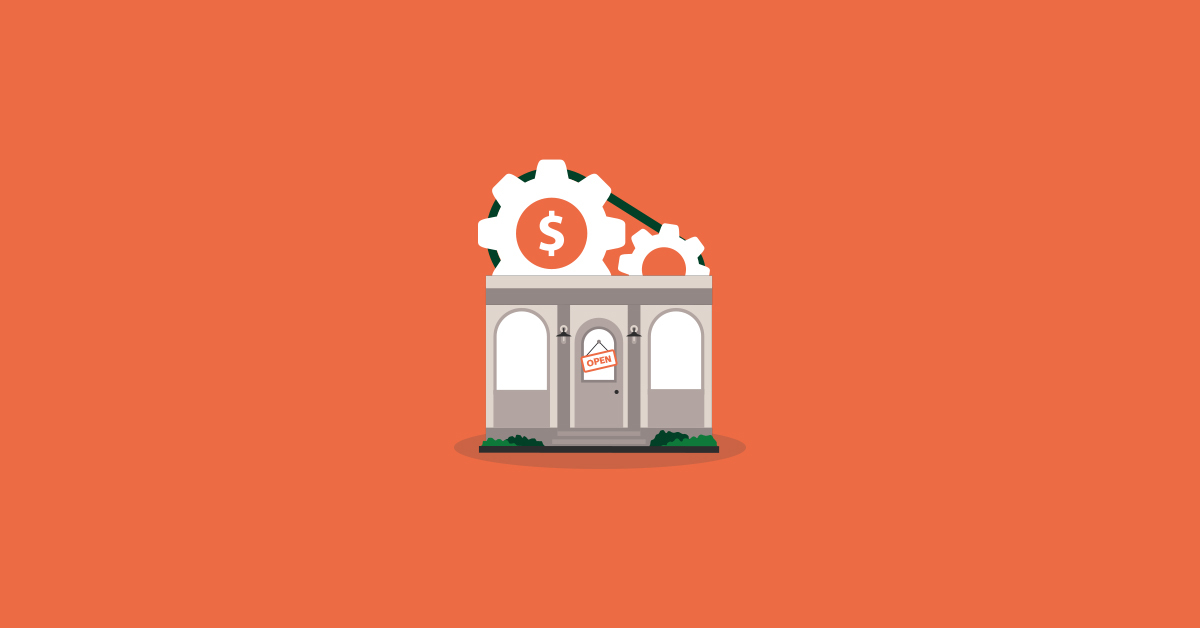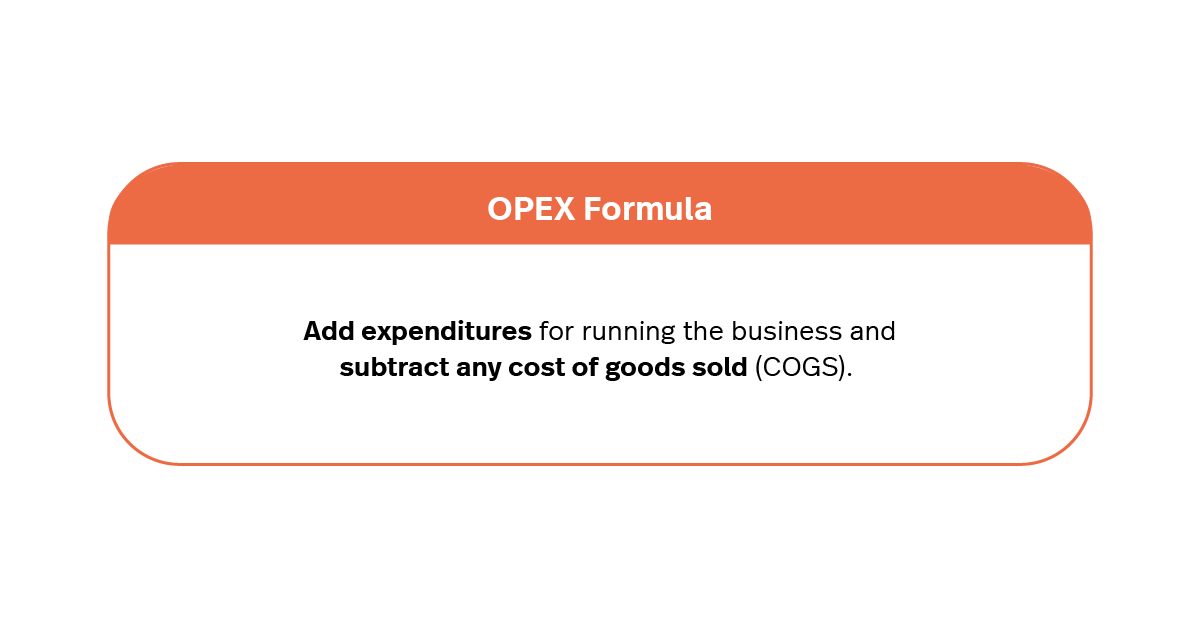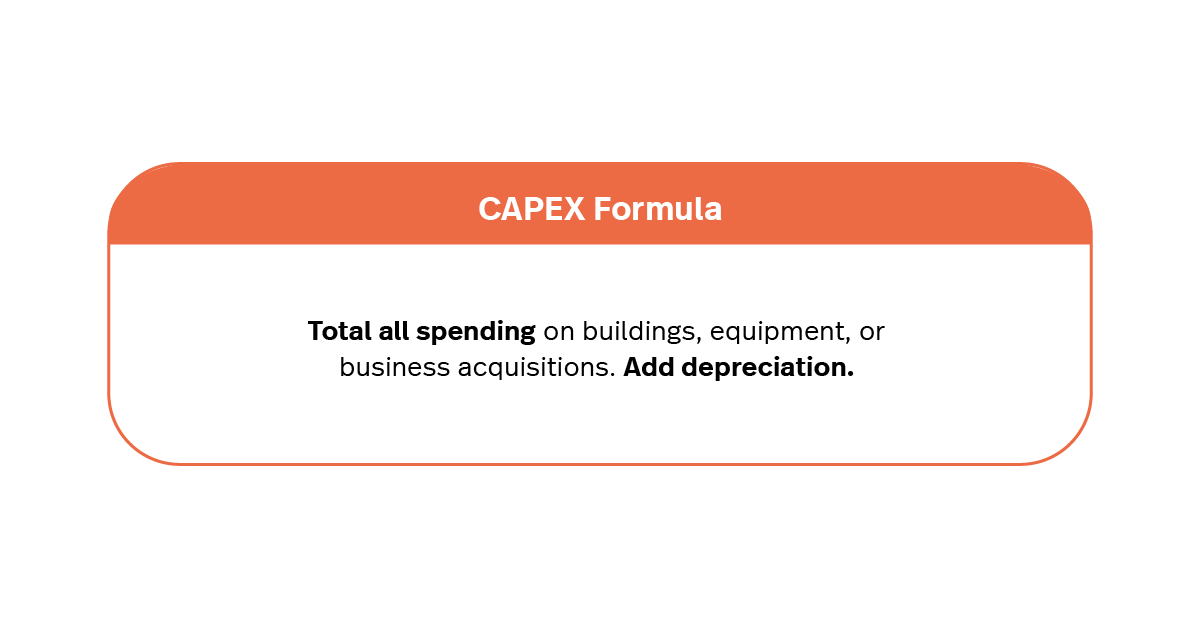
If you run a retail business, it never hurts to brush up on your understanding of the various expenses involved in running your business. In this article, we’ll focus on operating expenses.
We’ll answer retailers’ common questions about operating expenses. We will cover:
- What operating expenses are
- How capital expenses (CAPEX) and OPEX differ
- How to calculate OPEX and CAPEX
- How to manage your OPEX
- Common retail expenses
- What’s not included in your OPEX
- What’s happening industry-wide with OPEX
- How to manage OPEX
Our free guide will help you understand the kind of point-of-sale system you need to run your business efficiently.Searching for the right POS system?
What are operating expenses?
Operating expenses are the essential costs you pay to run and operate your business. Most of them tend to encompass short-term or day-to-day expenses.
They include expenditures such as rent, inventory costs, marketing, and payroll, said Hillary Senko Cullum, a wholesale and retail consultant operating at HSC Advisors.
“While these are unavoidable costs to keep your business running it is important to be diligent about the level of expenditures and ensure they are workable within your cash flow,” she said.
Is inventory an operating expense?
This question has a bit of a complicated answer. Once your inventory is sold, it becomes a COGs expense (otherwise known as cost of goods sold). But before that, inventory is reported on your balance sheet as a current asset.
Inventory isn’t all that simple, though: it encompasses raw materials, transportation and delivery, manufacturing, storage and overhead are all essential components of inventory.
Good to know
|
Capital expenses vs operating expenses: what’s the difference?
Business expenses can be a little confusing, whether you are considering starting a new retail business, or up-and-running but handling your own bookkeeping and accounting.
They fall into two basic categories: OPEX and CAPEX. Here’s how they differ.
Understanding CAPEX
Capital expenses include costs for long-term benefits such as equipment purchases, building improvements, or technology, explains Jessica Distel, a certified public accountant (CPA) and a managing director at Buckingham Advisors. “Capital expenditures are often not effectively budgeted for and can result in unexpected depletions of cash flow,” said Distel.
Examples of capital expenses include:
- Expanding your current retail space
- Opening a new brick-and-mortar store
- Replacing air conditioning or a roof
“Setting aside a percentage of revenue or profit into a savings account specifically designated for capital expenditures is a great way to plan for future costs that may be on the horizon,” said Distel.
Understanding OPEX
To recap, operating expenses are the costs of running a business and may include costs such as rent, utilities, marketing and payroll. “Operating expenses are a necessary component of a business and should be analyzed and budgeted for,” said Distel.
COGS vs OPEX
Your cost of goods sold (COGS) are expenses tied to sourcing or making your products and bringing them to the place where you will sell them. “That usually includes the cost of the inventory, freight, duties, shipping and packaging, said Abir Syed of UpCounting. “Expenses incurred during the process of selling the inventory are usually excluded from COGS, such as rent for a showroom or salaries of the salespeople or marketing.”
How do you calculate OPEX and CAPEX?
Retailers can calculate OPEX and CAPEX using the following formulas.


“Operating expenses are typically more important for a retailer as they are indicative of the health and performance of the business,” said Syed. “Capital expenditure isn’t irrelevant, but in a lot of cases as long as it’s not egregious, strong operations can cover CapEx requirements, or they can be financed through loans or equity.”
Senko Cullum suggests retail businesses carefully evaluate the goals and purpose of any capital expenditure, before spending, to understand the expected value or growth potential.
How to track CAPEX and OPEX
If you’re not already using accounting software for your expenses, now’s the time.
Track all expenses in accounting software like QuickBooks, suggests Armine Alajian (CPA), founder of the Alajian Group. “When you make a purchase from a debit or credit card, categorize that expense in the proper expense account.”
Syed agrees it’s best to regularly calculate expenses by using accounting software, so you know where certain cash outflows belong in the records.
And Distel echoes this advice, adding that tracking and reporting historical costs are integral components of budgeting for (and forecasting) upcoming costs and projected profits. “Performing a routine overhead cost analysis may help a business owner determine ways to reduce costs or make the business run more efficiently,” she said.
We also recommend budgeting for operating expenses and capital expenses separately. That will allow you to be more organized and prioritize each expense separately.
How to track capital expenses
Capital expenditures require a different approach than operating expenses. CAPEX consists of long-term expenses such as maintenance and anything that involves investments for future growth. As a result, capital expenses require long-term budgetary planning. Think of this as tracking future projects for growth.
Tracking CAPEX involves creating deadlines, identifying the scope of the project and accounting for budgetary needs. Include important details such as materials, funding requirements, labor costs, and other necessary information.
Accounting software, rather than manual bookkeeping, will give you more freedom when mapping out your capital expenses.
How to track operating expenses
Operating expenses are the ongoing day-to-day expenses that are involved in keeping your business running. We will discuss more examples later, but they include costs such as utilities, wages and property tax.
Spreadsheets can be a good starting point for tracking business expenses when you first open your business. But as you scale and your expenses become more complicated, you’ll need a more sophisticated way of tracking your expenses.
That’s where accounting software comes in: not only will you save time on bookkeeping, but you’ll get a better overview of your expenses compared to your overall revenue. This can help you understand where you need to cut costs, and how to streamline your expenses to maximize revenue.
If you’re transitioning from Excel spreadsheets to a software that comprehensively tracks expenses, don’t stress about losing data. These sheets can easily be imported to most accounting software.
By eliminating manual entry of your daily and monthly expenses, you’ll reduce the risk of errors and make your life (and your accountant’s life) much simpler when it comes to tax time.
What are some examples of retail operating expenses?
As a retailer, your operating expenses will be much different from other kinds of businesses. Typically, the top retail operating expenses include:
- Salaries: Payroll costs typically make up a significant portion of your budget. Your business also has to factor in taxes and benefits for employees here.
- Store rent: You might pay more in rent for a prime location with high foot traffic, while an online retailer might not have to think about this expense at all. Renting usually comes with added expenses for maintenance, cleaning, utilities and tax.
- Marketing and ad spend: This covers all your spending on traditional channels like television adverts, print coupons, Google Ads, and social media promotion.
- Product deliveries: Delivery costs for retailers can vary significantly depending on the size and weight of the product being shipped, as well as the distance it needs to travel.
Like other businesses, retailers are also likely to spend recurring monthly amounts on:
- Software subscriptions
- Ecommerce platforms
- Website maintenance
- Merchant and bank fees
- Telephone and internet bills
- Light, heat, cooling, and energy
- Commercial rent
- Transport
- Consulting
It is easy for operating expenses like marketing to grow quickly, said Senko Cullum. “For this type of expense, it is essential to evaluate the return-on-spend, meaning are you receiving a positive sales impact based on what you have spent?”
“Expenses like marketing have a more direct tie to revenue, making it easier to build metrics around the return on investment. But all OPEX should be evaluated to see if it is positively impacting topline sales while not degrading bottom-line profits,” she said.
What’s excluded from operating expenses?
Operating expenses do not typically include one-time costs such as capital investments or long-term debt payments. These business costs, and a range of others, are what are known as non-operating expenses.
Understanding non-operating expenses
Non-operating expenses are not related to a company’s core business operations. These can include:
- Fees for legal services
- Charges for interest on loans
- Gains or losses from asset sales
Non-operating expenses still need to be monitored closely, so you can make financial decisions and accurately calculate your business’s earnings.
How to manage OPEX
When it comes to managing your operating expenses, one of the most important things to do is manage your budget efficiently.
Senko Cullum believes the best way to manage OPEX is to set quarterly budgets, then evaluate actual expenditures against budget. “This allows you to understand what areas are spending more and where you can potentially cut back,” she said.
Here are a few other ways to effectively manage your operating expenses:
- Take advantage of cheaper marketing methods, such as email outreach and social media posts
- Remove third-party providers and embrace technology to cut costs by using an integrated POS and payments platform
- Assess areas where you can reduce waste
- Review all subscriptions and cancel anything redundant or unused
What’s going to happen with retail operating costs in 2023?
It’s expensive to run a retail business right now. Retailers are experiencing a general increase in expenses across the board, said Lee Whitaker, general manager at the Parker Avery Group.
“General global unease related to conflicts in Europe and threats in the Pacific is driving this through price inflation,” said Whitaker. “Interest rate increases have made access to capital more difficult than in recent history.
Both day-to-day expenses and long-term expenses like facilities, equipment and infrastructure are seeing price increases related to supply chain issues and legacy impacts from COVID-related interruptions or delays, he explained.
Preparing for rising retail operating expenses
Amid such rising costs, retail stores may be forced to increase the pricing of their merchandise or recognize a reduced profit margin, said Distel.
“When making such decisions, I would highly recommend that business-owners research performance metrics and key performance indicators for their specific industry and market. Doing so can help the business stay competitive,” she added.
If you want to learn more about owning and operating your business, talk to a Lightspeed expert today.
Editor’s note: Nothing in this blog post should be construed as advice of any kind. Any legal, financial or tax-related content is provided for informational purposes only and is not a substitute for obtaining advice from a qualified legal or accounting professional. Where available, we’ve included primary sources. While we work hard to publish accurate content, we cannot be held responsible for any actions or omissions based on that content. Lightspeed does not undertake to complete further verifications or keep this blog post updated over time.

News you care about. Tips you can use.
Everything your business needs to grow, delivered straight to your inbox.




